Description
The book Terrible Tehran or a Nightmare: Terrible Tehran is the title of a novel by Morteza Mushfeq Kazemi, an Iranian writer (born in 1281).
Terrible Tehran is in fact the first Iranian social novel. Mushfaq Kazemi, relying on the correct principles of novel writing and focusing on women, addressed the internal corruptions of Iranian society in the late Qajar and early Pahlavi eras. Describing corruption, prostitution, and social insecurity in the post-constitutional years, he is in fact expressing the general despair that resulted from the failure of the constitutional revolution.
The story of the novel revolves around the love of Farrokh and Mahin, but the author deals with the causes of constitutional deviation, prostitution of women, and corruption in the administration. Its narrative style is based on Persian folk tales with a look at modern novels such as Count Monte Cristo by Alexandre Dumas.
Mushfaq Kazemi finished the novel The Terrible Tehran in October 1924 in Berlin (and this date is listed at the end of the printed version of the book) and was 26 years old at the time. The novel was first published as a footnote in Setareh Iran newspaper and later became a book. The first edition of the book shows the date of 1305.
Tehran horror novel is the story of a young man named Farrokh. He dreams of marrying his cousin Mahin, and in order to achieve this goal, he faces many difficulties and adventures. Tying their destiny to a critical moment in Iranian history; A period in which the traditional Qajar aristocracy is giving way to new classes.

Morteza Mushfeq Kazemi’s most famous novel and in fact the first Persian social novel is “Terrible Tehran”, he wrote it under the age of twenty for the newspaper “Setareh Iran”. The one-night memorial part of the second volume of Tehran is scary. Terrible Tehran is in fact the first Iranian social novel. Mushfaq Kazemi, relying on the correct principles of novel writing and focusing on women, addressed the internal corruptions of Iranian society in the late Qajar and early Pahlavi eras.
Describing corruption, prostitution, and social insecurity in the post-constitutional years, he is in fact expressing the general despair that resulted from the failure of the constitutional revolution. The story of the novel revolves around the love of Farrokh and Mahin, but the author deals with the causes of constitutional deviation, prostitution of women, and corruption in the administration. Its narrative style is based on Persian folk tales with a look at modern novels such as Count Monte Cristo by Alexandre Dumas.
In a part of Tehran novel, we read terrible
“The air was getting clearer. The cold breeze of the night still blew, silence and commotion reigned in the city of Tehran; In the middle of the city, especially in the artillery and exercise fields, there is a certain excitement and movement.
In the neighborhoods of Tehran that day, a Cossack was seen next to every person in Aghan. The passers-by, without realizing how it happened last night, looked at the Cossacks with fear and anxiety, and then slowly walked forward and turned away, and only when there were several people together did one say under each other’s ears: The Cossacks are the city. “They took it.”
Yadegar Yek Shab: A Wandering Love
Terrible Tehran novel is the first volume of Farrokh and Mahin’s love story. Farrokh is a young man from a poor family who falls in love with Mahin, a girl from an aristocratic family. There are many obstacles in the way of the two lovers getting together.
Mahin’s father is one of the opponents of this carpenter; He plans to make a fortune through his daughter’s marriage to wealthy but wealthy princes. On the other hand, problems arise for Farrokh and put him in a difficult and unjust situation. The novel describes Farrokh’s efforts to overcome these problems and join his lover.
Morteza Mushfeq Kazemi: Popular intellectual
Morteza Mushfeq Kazemi (1351-1281) was born in Tehran. He studied law and political science in Germany and France and worked as a writer, journalist and employee of the Ministry of Interior and Finance. The coup d’etat of 1299, which marked the beginning of a fundamental change in Iranian society, was supported by intellectuals to pursue ideals such as the establishment of a modern state, the strengthening of Iranian nationalism, the restoration of Iranian honor, administrative reform, women’s liberation, the promotion of order and security, The people of that time were, to be realized.
Mushfiq Kazemi was also a pro-constitutional activist. The first generation of constitutional intellectuals led by “Taghizadeh”, “Bahar”, “Foroughi”, “Dehkhoda” and Mushfeq Kazemi, by examining the causes of the failure of constitutionalism to prevent turmoil and crisis in the country, found a way to support a powerful ruler to discredit He returned to Iran the Qajar dynasty.
Mushfeq Kazemi was about 18 years old when he wrote the novel The Terrible Tehran under the influence of “Alexandre Dumas”, “Michel Zovago” and “Victor Hugo” and because he did not have the money to publish it, he sent it to the newspaper “Setareh Iran”. “Yadegar Shab”, the second volume and the continuation of the story of Tehran, is terrible.
“Withered Flower” and “Envy of Feathers” are among his other works. Mushfeq Kazemi published the book “Times and Thoughts” in 1350; A two-volume book containing his memoirs.
Omid Farda, the publisher of Volume One / Volume One of Tehran, is terrible.
Review of the Yadegar Yek Shab novel
The Constitutional Revolution is considered one of the most important events of the last hundred years; A revolution that is considered the origin of contemporary Iranian history and literature and influenced many events after it. The novel The Terrible Tehran was written during this period.
Terrible Tehran is considered to be the first Persian novel that was published as a footnote around 1303 and 1304. The novel is a literary genre that is considered the achievement of modernity and its creation in traditional societies is a sign of changing social conditions of that society. This type of literature appeared in many Persian works after the Constitutional Revolution by imitating modern Western literature in historical, social and police fields. Mushfiq Kazemi in the dreaded Tehran points to the causes of the deviation of the constitutional process, the prostitution of women and corruption.
However, it seems that Mushfiq Kazemi hopes to change the situation after the coup. The birth of a child at the end of the second volume is also a metaphor for the emergence of modern Iran. The first volume of the book ends with the coup d’etat of 1299, and the second volume of the book, entitled “One Night Memorial”, begins with modernism, and the modernization initiated by Reza Shah changes the face of Tehran and the relations between people.
Yadegar Yek Shab; The first Persian social novel
The novel The Terrible Tehran narrates the life of different social classes in the late Qajar period, and Mushfeq Kazemi provides the reader with a description of the political corruption and moral ruin of that period. At that time, the Qajar bureaucracy was disintegrating due to foreign interference, local uprisings, nationalist uprisings, and economic weakness.
Terrible Tehran is the tragedy of Iranian women who are plagued by corruption, ignorance, bigotry, prostitution and poverty. In this book, for the first time, a sociological approach looks at prostitution as a social disease.
In a part of the book, prostitutes describe their sufferings to Farrokh in the form of nested stories that show the moral and cultural ills of the Iranian society at that time. The unsuitable environment of brothels depicts the dark and chaotic spirit of women living in a ruined atmosphere.
The image of the city of Tehran in the book The Terrible Tehran
In addition to social issues, Mushfeq Kazemi paints a picture of the situation in Tehran during the constitutional period. The events in Tehran, the capital of Qajar, lead to the description of neighborhoods in Tehran and provide a picture of the situation of coffee houses, juice houses, houses of corruption and the urban space of that period. From the pit of the square and the gate of the government to an aristocratic club at the intersection of Kent on Lalehzar Street and the village of Evin, thatched houses with running water are described in this book.
However, Mushfaq Kazemi seeks to present a picture of its inhabitants more than describing the structure of the city.
It is the inhabitants of the city who have frightened the city. The dreadful Tehran is the city of prostitutes and pedophiles, the city of wealthy men, the city of people with torn mouths, the city of aimlessness, the city of caution and the city of fear. Mushfaq Kazemi describes all this to attribute this situation to the corruption and filth of the Qajar aristocracy. There are Qajar survivors who oppress Farrokh and Mahin. The solution he proposes to get rid of this oppression and corruption is the overthrow of Qajar.
Analysis of some characters in the book Tehran Dreadful
Many studies have been done on the novel The Terrible Tehran, which tries to understand the different dimensions of the society of that period in Tehran through the story and the characters of the novel. One of these researches is the book “From the Terrible Tehran to the Vacancy of Salouch”. According to Mushfeq Kazemi, grace and merit have no value in Iranian society.
People’s attachment to fleeting and humble pleasures, depravity and addiction, urban disorder, flattery and false friendships is the general mood of the society, which at the end of the book, somehow overcomes this relative destruction of human values; Unless the changes promised by the constitution take place. Most of the characters that Mushfaq Kazemi describes in his story are representatives and signs of a range of people in society, each of whom suffers from some form of corruption or has been misled by the state of society.
“F … Al-Saltanah” is Mahin’s father, a politician who represents most of the politicians of that period. By bribing high-ranking political officials, he has taken on responsibilities in a ministry of which he has no knowledge. In order to reach a higher position, he is willing to marry his daughter to a lazy young man against his will. For him and many other characters in the book, money is the most important value in life.
“Ali Ashraf Khan” is another book character and deputy minister of a ministry who on the night of the wedding, “Effat” gives his wife to the head of the ministry to be promoted to a higher position. He spends day and night gambling, opium and gambling with other managers.
“Queen Taj Khanum” Mahin’s mother is an example of a class of Iranian women who marry at a young age without any knowledge of their husbands and because they have never experienced love and know nothing about it, stand up to other women who do not want to accept this coercion. they do. Mahin’s mother joins the father for the same reasons and prevents her daughter from choosing freely.
“Ashraf” is a beautiful poor girl who is raped by a young nobleman. Following complaints from the Ashraf family, police officials threatened to silence them. This incident leads to the corruption and destruction of the girl.
Haj Mehdi is a market man who pretends to be religious. But secretly drinks wine; He prays in usurped houses and gains wealth for himself by descending. He is an example of an Iranian bourgeois who has no faith other than money.
Yadegar Yek Shab Related books
1- Introducing the book Yadegar Yek Shab on YouTube
2- Introducing the book Yadegar Yek Shab in Aparat


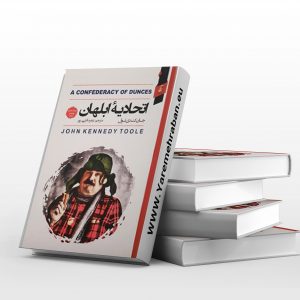



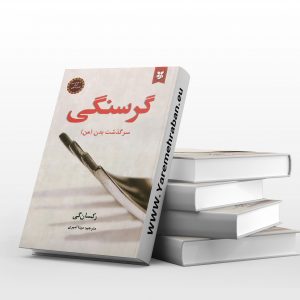


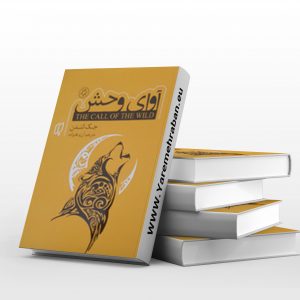

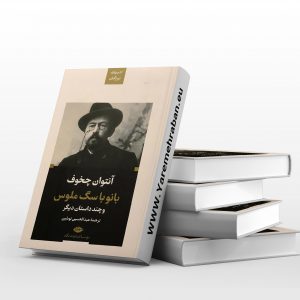
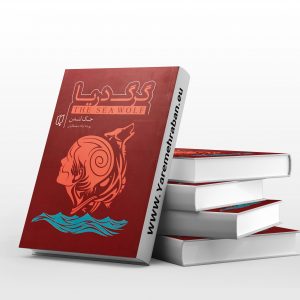
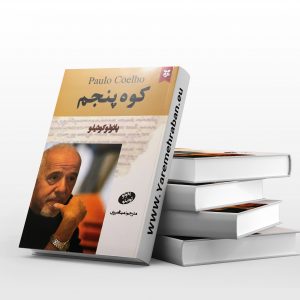
Reviews
There are no reviews yet.